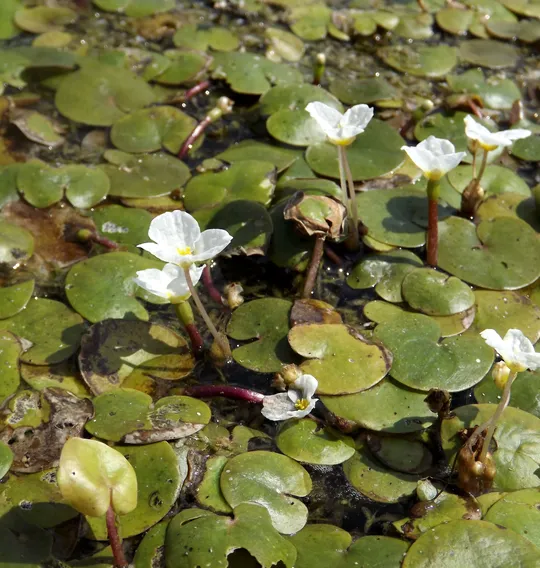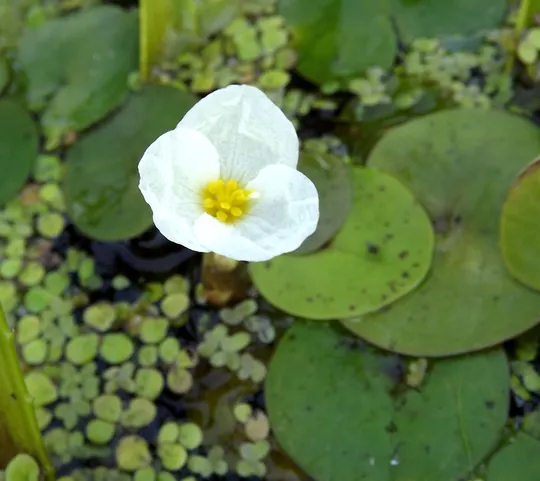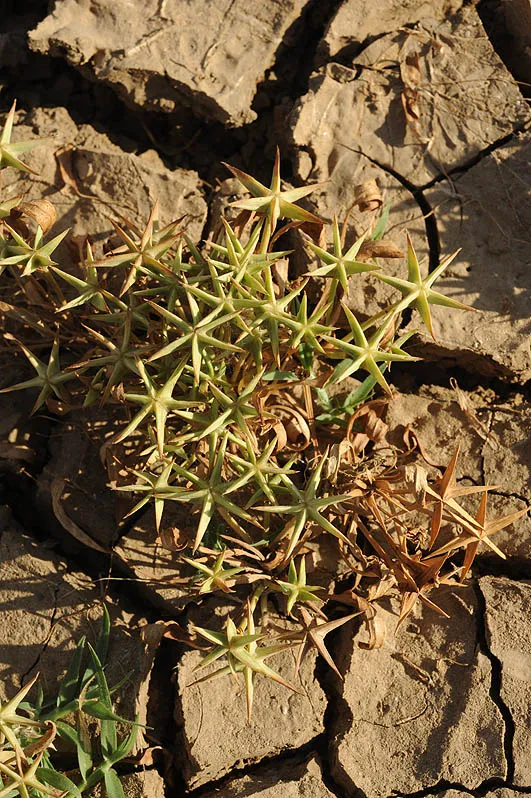European Frog-bit
Hydrocharis morsus-ranae


Hydrocharis morsus-ranae was collected
twice in the early 1950s in Enot Enan in the Hula Valley, but disappeared and
was never found again in Israel.
Warm stagnant
water (brackish or fresh) in pools, lakes and ditches.
Hydrocharis morsus-ranae belongs to the Hydrocharitaceae family, which
includes 16 genera and 95 species found in aquatic habitats around the world.
Additional genera in this family in Israel include Halophila (two
species in the Gulf of Elat – see vol. I) and Vallisneria. Elodea
canadensis that also belongs to this family is grown in aquariums. In the genus
Hydrocharis there are two species with a northern
Euro-Asiatic distribution.
Hydrocharis
morsus-ranae can be presumed extinct in Israel, as a result of the increasing
exploitation of water and disturbances in the springs at the margins of the
Hula Valley. Even previously, the plant was extremely rare and was supposedly
collected only twice. It is also possible that its appearance in the Enan
springs was episodic. There is no ecological and demographic information on the
populations that existed.
The global geographic distribution of H. morsus-ranae
is broad and it is common in wetlands in the Balkan countries. However, in some
of the Mediterranean countries it is endangered – in Spain it is defined as "critically
endangered (CR) and it is extremely rare in North Africa. The overall IUCN global threat level is
"endangered" EN.
Attempts should be made to reintroduce Hydrocharis morsus-ranae
from sources close to Israel and to grow it in botanical gardens and nurseries.
Its ecology should be studied and the possibility of reintroducing it at a
later date to high quality wetlands in one of the nature reserves should be
considered.
Hydrocharis
morsus-ranae is
found in temperate regions of Eurasia and Australia. In the Mediterranean Basin,
it grows in Spain, France, Italy, and the former Yugoslav countries, Greece,
Turkey, Syria and Israel. It also grows in Algeria and Morocco. The plant was
brought to Canada and the U.S. in the 1930s and is now an invasive species, particularly
around the Great Lakes in the northeastern United States and Canada.
Hydrocharis
morsus-ranae is an extremely rare free-floating aquatic plant. It
was once found in the Enan springs in the Hula Valley and since then is
extinct. In many Mediterranean countries, it is classified as an endangered
species, but North America it is an invasive species.
ויזל, י. וליפשיץ, נ. 1979. צמחי מים בישראל. הוצאת רשות שמורות הטבע.
Current Occupancy Map
| 1000 squre meter pixel | 5000 squre meter pixel | 10000 squre meter pixel | |
|---|---|---|---|
| number of observations | 0 | 0 | 0 |
| in total pixels | 0 | 0 | 0 |
| Family | Hydrocharitaceae |
| Classification | On the endangered species list |
| Ecosystem | Mediterranean |
| Chorotype | Euro – Siberian, Mediterranean |
| Conservation Site | return to Hula Nature Reserve, Agamon HaHula and Enan Stream |
| Rarity |
1
6
6
|
|---|---|
| Vulnerability |
0
4
4
|
| Attractiveness |
0
0
4
|
| Endemism |
0
0
4
|
| Red number |
1
-1.0
10
|
| Peripherality | N |
| IUCN category | DD EW EX LC CR EN VU NT |
| Threat Definition according to the red book | Extinct |
 Based on:
Based on:






